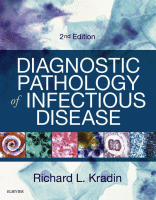Physical Address
304 North Cardinal St.
Dorchester Center, MA 02124

The liver is the target of many infectious agents, most notably hepatotropic viruses such as hepatitis B virus (HBV) and hepatitis C virus (HCV). In addition, many infectious organisms can involve the liver in the setting of disseminated infection, in…

The surgical pathologist plays a key role in the diagnosis of gastrointestinal infection. Virtually all types of pathogenic microbes can cause gastrointestinal infection, so the diagnostic pathologist must be cognizant of their varied histologic manifestations and acquainted with the complex…

Introduction Infections can involve all three layers of the heart, and virtually all classes of organisms infect cardiac tissues. Because the entire cardiac output is delivered to the lungs and other vital organs by the cardiac ventricles with each cardiac…

Introduction In its role as a portal between the ambient environment and the internal milieu, the lung is also the most frequent site of serious infection. A variety of factors predispose to pulmonary infection, including distortions in lung anatomy, decreased…

The head and neck area is arguably the most complex area of the human body; with its many physical connections to the outside environment, it plays host to myriad infectious processes. The aim of this chapter is to provide the…

The clinical microbiology laboratory is constantly evolving and progressing. New technologies have revolutionized the characterization and diagnosis of pathogens. The purpose of this chapter is to review the features, benefits, and limitations of some of the key new methodologies in…

Introduction Electron microscopy (EM) can assist in the identification of infectious organisms in surgical and clinical pathology specimens. However, since the advent of immunohistochemical, molecular (e.g., in situ hybridization, polymerase chain reaction), and serologic techniques, EM has been less often…

Introduction In the previous edition, this chapter stressed the importance of infectious disease cytology to the education of pathology trainees and practitioners. Within the contents of the chapter, are illustrated cases intended to demonstrate the value of the following: 1.…

Overview: Biopsy The practice of clinical infectious disease management has undergone a revolution with the advent of newer technologies, such as organism-specific molecular or protein-based diagnostic tools and, more recently, high throughput sequencing technologies on microbial diagnosis and the management…

The identification of infection in biopsied tissues is the primary responsibility of the surgical pathologist. In an age when both noninvasive and minimally invasive approaches and techniques have increased, it is important to revisit the role of the biopsy in…